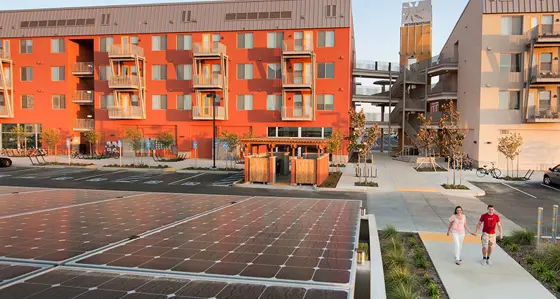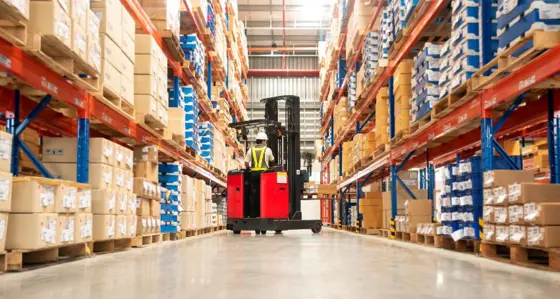
Supply chain curveballs: how US consumer brands are reinventing amid ongoing supply chain pressures
6 min read 20 June 2025
Supply chain issues are no longer temporary trade policy blips - they’re a strategic force reshaping how U.S. brands in food & beverage, apparel, and beauty rethink their global supply chains. In the face of tariff pressure, companies that once relied heavily on suppliers in China and Southeast Asia are doing more than diversifying—they’re redesigning the very DNA of their operations.
Tariffs as a strategic catalyst for change
The latest round of U.S. - China tariff escalations, compounded by labor shortages, warehouse congestions, and freight bottlenecks in Southeast Asia, forced many brands back to the drawing board. But rather than retreating, some have used this as a catalyst for innovation.
Tariffs are forcing brands to not just think about their supplier network and supply strategy, but also look at their product design, formulation, packaging and the way they reach customers.
In this article, we highlight the brands that have embraced the innovation opportunity and look at the lessons we can learn.
How are US consumer brands innovating to tackle supply chain pressures?
Estee Lauder, Shisedio and Ethique - beauty brands turning to ingredient simplicity
Shortages of ingredients like sunflower oil and glycerin, a reliance on botanical extracts from southern China and dependency on packaging from southeast Asia have created bottlenecks and cost pressures for beauty brands. Major beauty corporations like Estee Lauder and Shiseido as well as indie beauty brands are looking at reformulations and packaging innovations as a result.
Brands like Ethique, for instance, are rethinking the typical format of some beauty products turning away from the traditional liquid format and instead embracing beauty bars with a sharper ingredient list, lower reliance on distant suppliers and plastic-less packaging. In a move to combat supply chain pressures, brands like this are building more flexible and sustainable supply chains whilst creating a unique brand identity and modernizing products.
Levi’s and Under Armour - apparel goes modular and nearshore
Leading fashion houses are overhauling their fast-fashion playbook by developing a modular design system. They are increasingly nearshoring or onshoring the finishing elements like stitching and accessories and thus reducing lead times and decreasing reliance on countries further afield. In Mexico, Tijuana’s sewing lines and Coahuila’s denim mills are producing closer-to-season launches for giants like Levi’s and Under Armour leading to shorter product design-to-launch cycles, better US standard compliance and flexibility to make changes close to launch versus freezing months in advance.
This nearshoring/ onshoring effort is reducing lead times significantly – on an average from ~90 to 30 days.
KIND: food and beverage reimagines packaging and sourcing
Top food and beverage players are looking to incorporate local ingredients, rethink their packaging and look for domestic co-packing arrangements in response to supply chain pressures. KIND snacks introduced its first curbside recyclable wrapper in the U.S. for its bars category. KIND’s goal is to make all packaging recyclable (and potentially domestic by 2030). This recyclable wrapper paper will be available across several states, including New York, New Jersey, California and Texas.
Many leading brands have also made strides in rethinking their ingredients, such as finding domestic grain alternatives to have more flexibility in their supply chain.
While these changes can slightly raise cost of goods sold (COGS), there can be synergies in logistics and distribution fees and ability to negotiate with sustainability-minded retailers who see value in the domestic sourcing story.
What are the lessons we can learn from these innovators? 4 supply chain strategies to consider
Across these examples we see 4 key strategies gaining momentum.
- Redesigning for local inputs
Brands are simplifying formulas, materials, and SKUs to reduce reliance on intermediates outside the US. In beauty and food especially, this often means switching to local or regional substitutes that align with brand values. - Geographical diversification, nearshoring and dual sourcing
Companies are creating “Plan B” supply chains in Mexico, Central America, and even the U.S. Dual sourcing is no longer a nice-to-have - it’s an operational imperative. - Digital twins and predictive logistics
AI and digital twin tech are enabling companies to simulate tariff scenarios and optimize sourcing Apparel and beauty brands, in particular, are using this to fine-tune where and how they make each component. - Packaging as strategy, not afterthought
By rethinking materials, weights, and shipping volumes, companies are cutting costs while navigating both tariffs and sustainability regulations.
Looking ahead: from reactive to resilient
While tariffs may ebb and flow with geopolitics, the structural shift in supply chain thinking is here to stay. Companies aren’t just looking for new suppliers—they’re building supply chain resilience into their core.
The future of retail isn’t just leaner—it’s sharper, faster, and surprisingly local. Brands that can capitalize on this shift quickly, are those that will thrive. At Baringa, we’re working with clients to do just that, helping businesses reinvent their supply chain and move from a place of uncertainty to agility. Get in touch to learn how our experts can help you adapt.
Our Experts


Related Insights

Microgrids: Driving the energy transition
Expert support across the microgrid value chain for a resilient and decarbonized energy future.
Read more
UK offshore wind supply chain investment guide
To achieve the UK's 2030 and long-term net-zero goals, we need to boost investment in our domestic supply chain.
Read more
Shifting US consumer preferences for AI-generated content
As AI blurs the lines in content creation, new Baringa research reveals a complex and sometimes contradictory picture of US consumer attitudes towards authenticity and the value of AI-generated media.
Read more
Rewiring supply chains for tariffs and the new world of trade uncertainty
Global trading tariffs are being upended, and companies have the choice of fight, flight or freeze.
Read moreIs digital and AI delivering what your business needs?
Digital and AI can solve your toughest challenges and elevate your business performance. But success isn’t always straightforward. Where can you unlock opportunity? And what does it take to set the foundation for lasting success?